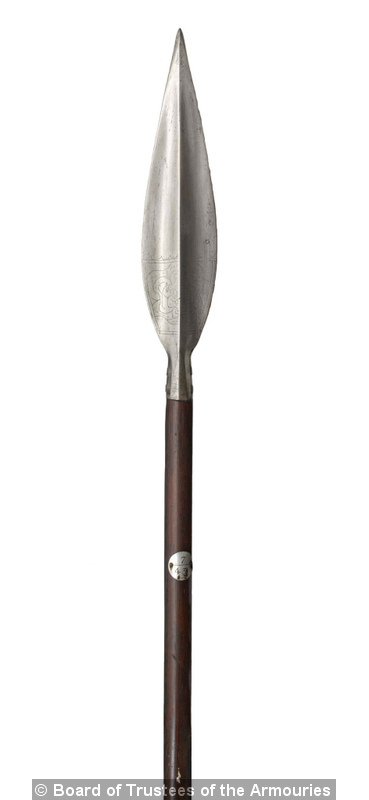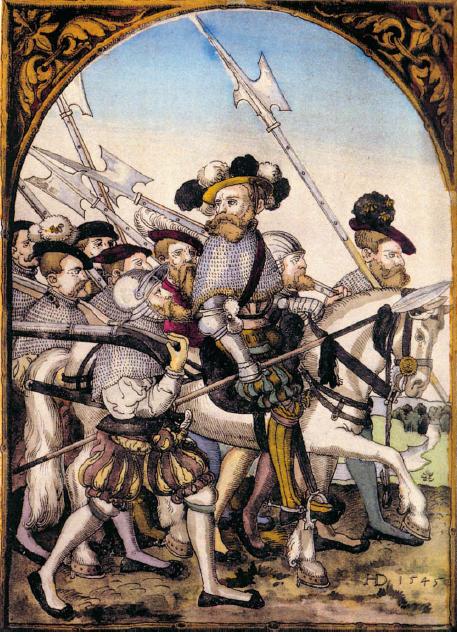Here are four spears from a manuscripts on the Imperial German army from the early 16th c. :




All four seem to be constructed in the same manner, but I'm not sure what that construction is. While the first one and maybe the fourth one seem to have a socket of sufficient length integral to the spearhead, as usually seen on spearheads, the second and the fourth do not have such a clear socket.
On the other hand, all four have that part of uncertain nature (to me) delimited by two tassels. On the fourth spear it looks bigger than the shaft itself, but on the third spear it appears narrower, and maybe integral to the spear head (very unsure about this; here is a close up).

I was wondering just how the spearhead might be affixed to the shaft on these spears, especially the second and third.
Might the area between the two tassels might be a very long socket? The third one especially gives me this impression. But why such a long socket and wouldn't it be overly heavy (note : these spears are not overly long, they appear to be between 2m and 2,50m in length; the third spear detailed above is held by the horse's cavalier and runs about the length of the horse) ?
Might there be langets, as seen on halberds and glaives but not usually on spears (as far as I know) ? Or even a tang system ?
I'll be very grateful for any thoughts on these spears as I may reproduce one like that in the future.
Thanks in advance,
Cheers !

